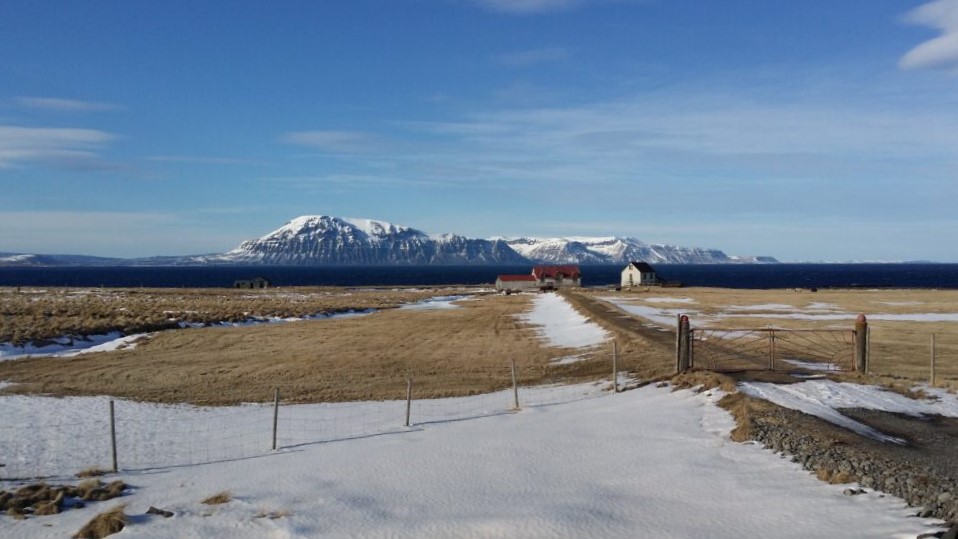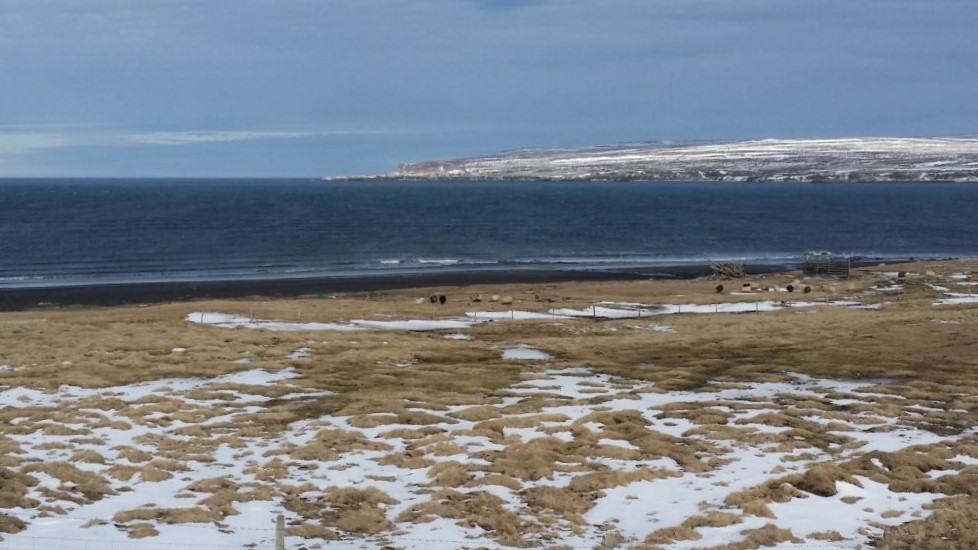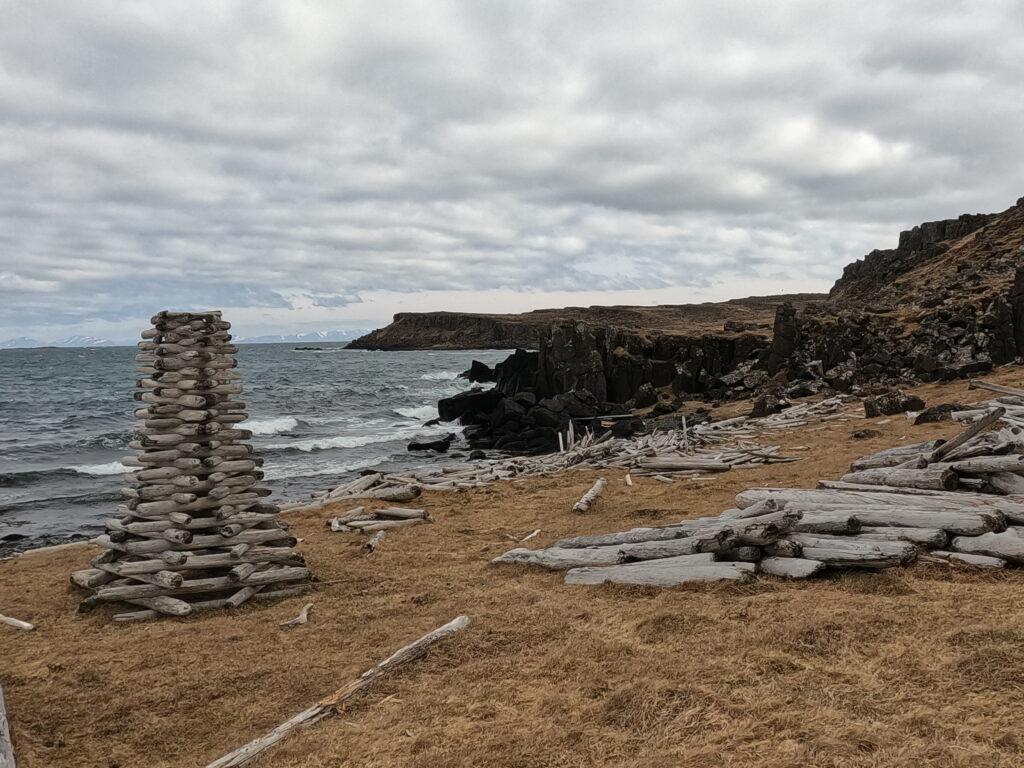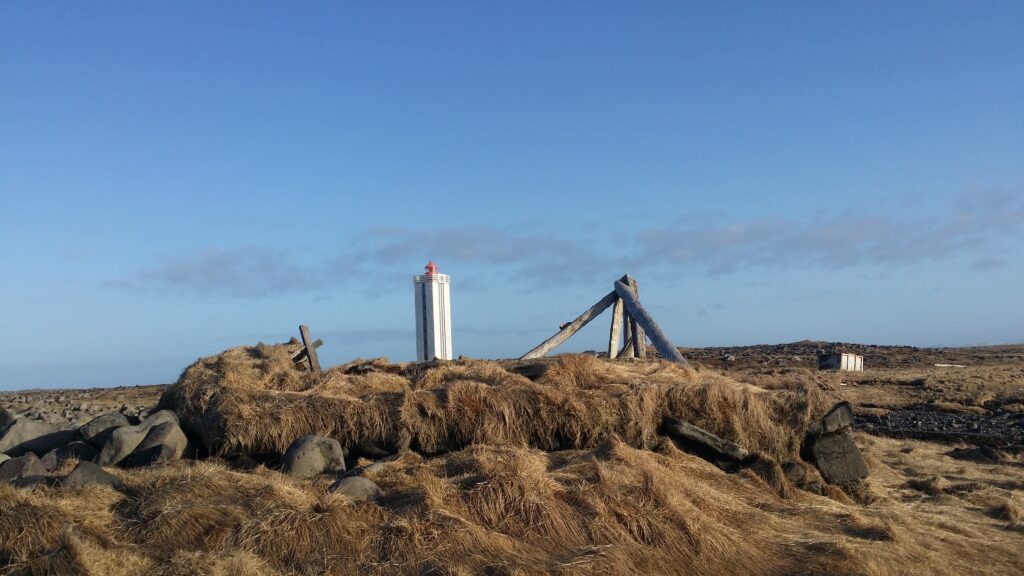The area in the far north-east of Iceland is largely wasteland, it is a bit like Svalbard (Spitsbergen). You can really wonder why someone wanted to settle here – and that there are still buildings 1000 years later! But it turns out that these have been valuable areas. The main reason is fish, of course, and in earlier times most certainly walrus.

Perhaps something more surprising for us Norwegians: driftwood. Iceland was dependent on imported wood for centuries, and Denmark’s trade monopoly did not help the situation.

Owning land with a large influx of driftwood was very lucrative, and large quantities of wood have always drifted to the north coast of Iceland.

We went for a walk beyond Hraunhafnartangi in the hope of being able to swim at Iceland’s northernmost point. There is a lighthouse there, and next to it are the remains of a turf house. But we couldn’t swim there this time, the swells were too big.

On the way back, just before arriving at Raufarhöfn, we found a great beach close to the road. Clear water, birds and a sheltered bay with fine-grained sand. Can’t ask for more then, right?
